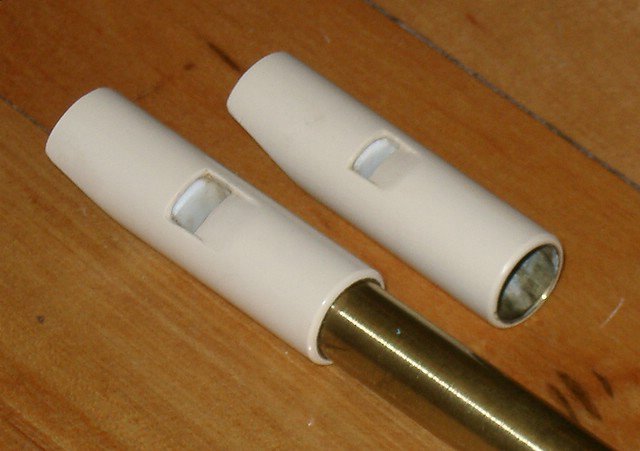
- CHIFF AND FIPPLE INTRODUCING BLUEBIRD WHISTLE HOW TO
- CHIFF AND FIPPLE INTRODUCING BLUEBIRD WHISTLE PLUS
- CHIFF AND FIPPLE INTRODUCING BLUEBIRD WHISTLE FREE
Most oc players start with a transverse Alto C. These oc's can play all sharps and flats but that requires cross-fingering. You progressively raise your fingers off the holes to ascend the scale, just like you do with recorders, tin whistles, and Native American flutes. Which oc's are easiest to learn? Transverse/inline fingering is more intuitive. A playable seedpod requires differently-sized finger holes.

You can spot them because all their top holes are the same size. There's a whole universe of decorative oc's - many from Latin America - that make dandy keepsakes but are not playable instruments. Pendants are also called seedpods.īeware of pendants that aren't playable. They're called pendants because most have attached necklaces so that you can wear them around your neck, like the black oc in the photo. (Some pendants don't even have the two thumb holes.) Pendants have an entirely different fingering system than the transverse/inline system.
CHIFF AND FIPPLE INTRODUCING BLUEBIRD WHISTLE PLUS
The two pendants in the photo have only 4 holes on top plus two thumb holes beneath. (As folk instruments, different brands of ocarinas sometimes have very minor fingering differences.) The main difference with inlines is their shape and that they extend straight out from your mouth when you play them.

You finger transverse and inline oc's in the same way. Small oc's can be pretty loud, so sometimes people buy larger ones so as not to disturb others. Other sizes include the smaller soprano, larger tenor, and the still larger bass. The yellow plastic transverse in the photo is the most popular size of ocarina - the Alto C. That's a range of 13 whole notes - certainly enough to play any song you like. For example, the smaller oc in the upper lefthand corner plays from A4 to F6 plus all intervening sharps and flats. The more fingering holes, the more notes you can play.

The instruments typically have 8 to 10 fingering holes on top, and two thumb holes underneath. Put your mouth on the extended fipple and blow while placing your fingers over the holes. You play them sideways, like a metal concert flute. Fosdick)īecause of their shape, transverse oc's are sometimes called sweet potatoes or submarines. Left to right: Yellow Plastic and White Ceramic Transverse Ocarinas, Two Black Plastic Inlines, and Two Ceramic Pendants (photo by H. The photo below shows two transverse oc's on the left, two rectangular inlines in the middle, and two round pendants on the right. They come in many shapes but categorize into three: transverse, inline, and pendant. Ocarinas are typically made of clay, plastic, or sometimes wood. He standardized the instrument so that it could play western scales with simple fingering. Italian Giuseppe Donati invented the modern oc in the 1850s. Ocarinas date back thousands of years to the ancient Chinese and Mesoamerican civilizations. This gives them their unique “full” sound. They do not have open-ended bores as do recorders, tin whistles, and Native American flutes. Ocarinas are vessel flutes: flutes that voice based on the resonance of sound waves within a closed air chamber.
CHIFF AND FIPPLE INTRODUCING BLUEBIRD WHISTLE FREE
I'll include sound samples and links to free resources.

Let's take a close look at ocarinas, recorders, tin whistles, and Native American flutes. If you already play the concert flute, they'll open up a whole new world of creativity for you. And they're ideal for adults new to music. They make excellent teaching tools for kids. There are tons of how-to videos and free sheet music for them on the web.
CHIFF AND FIPPLE INTRODUCING BLUEBIRD WHISTLE HOW TO
Beginners with those flutes spend days blowing into the mouthpiece to learn how to articulate notes.įolk flutes are simple to learn, inexpensive, portable. That makes them much easier to get started with than concert flutes or bamboo flutes. Which are easiest to learn? Appropriate for which kinds of music? Least inexpensive? What are their benefits and drawbacks?Īll these flutes are fipple flutes - you blow into a mouthpiece that directs your breath to make sound. Today we'll look at four other folk flutes: ocarinas, recorders, tin whistles, and Native American flutes. Limited they may be, yet millions enjoy playing them. So many Americans grew up playing them in school - and so many millions more have been sold - that they've become a legitimate means of musical expression. What makes them interesting is that they've also become popular folk instruments. They're incredibly easy to learn and to play. Those pre-band instruments are ideal for introducing children to music. My previous article discussed inexpensive plastic flutes: tonettes, song flutes, flutophones, and precorders.


 0 kommentar(er)
0 kommentar(er)
